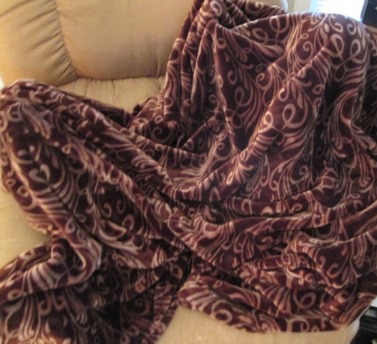- Home
- Sensory Processing Disorder
- Sensory Issues
What Do Sensory Issues Look Like?
Does my child have sensory issues and if so, how can I tell? Read on and I will describe some examples of what to look for, giving you a better idea of what kind of help your child needs.
Sensory problems can affect how well a person can function in a number of ways. These issues can affect behavior as well as the ability to perform well at school, in social situations and at a job when your child is older.
 Many children with sensory issues often want to shield their eyes from bright lights.
Many children with sensory issues often want to shield their eyes from bright lights.Sensory Issues: Hypersensitivity and Hyposensitivity
Hypersensitivity is extreme sensitivity to certain stimuli, including light, sounds, textures, smells and even one‘s own body awareness. Hyposensitivity is a lack of ability to sense stimuli, including light, sounds, textures, smells and body awareness. It is common for a person to be hypersensitive in some ways and hyposensitive in other areas.
Possible Signs of Sensory Processing Disorder
This list includes both hypersensitive and hyposensitive traits. Note that children with sensory issues may exhibit some but not all of these characteristics.
- Tendency to hold their ears when anticipating noises. Sometimes the noises they are sensitive to may not be very loud.
- Avoidance of strong or unpleasant odors.
- Pickiness about food; avoidance of foods with certain textures.
- Pickiness about what clothes they wear and dislike of certain textures or tight-fitting clothes.
- Difficulty focusing on one thing or task.
- Avoidance of being touched or cuddled.
- Inability to calm themselves down
- Sensitivity to bright lights. May close eyes at inappropriate times. For example, they may try to keep their eyes closed when they should open them in order to avoid running into objects.
- Resistance to rinsing hair under running water.
- Distaste for haircuts.
- Resistance to brushing teeth and/or using toothpaste.
 Because of his sensory difficulties, my son loves to wrap himself in his blanket. I think it's kind of cute, but more importantly, it seems to have a calming effect on him.
Because of his sensory difficulties, my son loves to wrap himself in his blanket. I think it's kind of cute, but more importantly, it seems to have a calming effect on him.- Desire to wrap themselves in a blanket, sometimes for long periods of time (and not just when sleeping and regardless of how hot the room may be). Note that if your child does this, you should allow it as this behavior often has a calming effect. However, you would want to take steps to make sure they don’t get too hot or suffer heatstroke. You could, for instance, keep the room at a cooler temperature.
- Tendency to cling tightly to a trusted parent, family member or friend when in unfamiliar surroundings.
- Desire to excessively smell objects or people.
- Inability to detect bad odors or tolerance for bad odors.
- Desire to wear tight-fitting clothing.
- Craving of excessive movement: rocking, pacing, bouncing a leg while seated, and/or constantly on the go.
- Frequent temper tantrums
- Aggression
- Insensitivity to pain
- Tendency to be easily confused or overwhelmed by too much stimuli, by too much information at once, or by too many instructions at once.
- Difficulty completing school assignments without constant encouragement to stay on task
- Tendency to lose their place when reading
- In infants and toddlers, rigid or floppy body
- Poor motor skills or tendency to be clumsy
- Difficulty making friends
- Difficulty with sleeping
- Difficulty with toilet training
- Handwriting difficulties
 While most children enjoy finger painting, some kids with SPD may dislike getting their hands messy.
While most children enjoy finger painting, some kids with SPD may dislike getting their hands messy.- Distaste for getting messy
- Easily distractible
- Impulsivity
- Tendency to not notice other people
- Slow-paced, lethargic
- In small children, will only go to one trusted parent or caregiver
- Fear of heights or of falling; fear of using moving playground equipment
- Ability to spin without appearing dizzy
- Distaste for baths or showers
- Lack of awareness of dirty hands or face
- Desire to constantly touch everything
- Tendency to break things
- Excessive drooling
- Self-abusiveness
- Unawareness of danger—they may love to jump or fall, possibly even from dangerous heights
- Desire to be squeezed
- Physical incoordination; tendency to run into objects
- Avoidance of eye contact
- Inclination to taste or chew nonfood items
- Desire for foods with strong flavors
 Some children with sensory difficulties may have a hard time telling the difference between letters that are similar.
Some children with sensory difficulties may have a hard time telling the difference between letters that are similar.- Difficulty telling the difference between similar letters
- Desire to make noise and/or listen to loud music
- May have a hard time hearing or responding to verbal instructions or prompts.
As large as this list is, it is by no means complete. If your child exhibits some of these characteristics, or even if you feel that something isn’t quite right about them, it may be best to go ahead and have them evaluated by an occupational therapist.
My motto is to leave no stone unturned. Check out every possibility until you find out exactly what is wrong. Because until you figure it out, you’ll be a lot less likely to get proper treatment or therapy for your child.
Also keep in mind that Sensory Processing Disorder can be mistaken for Attention Deficit Disorder (ADD), Attention Deficit Hyperactivity Disorder (ADHD), or even Asperger’s Syndrome. So if you haven’t already done so, download this checklist for identifying sensory issues in your child.



New! Comments
Have your say about what you just read! Leave me a comment in the box below.